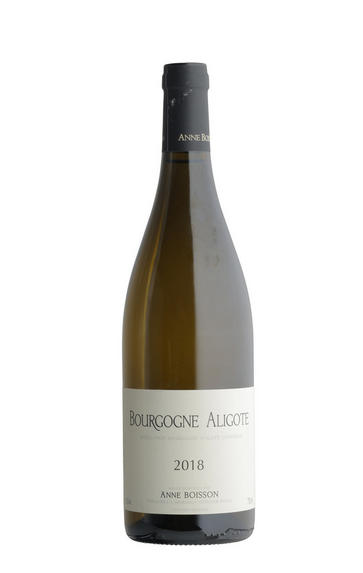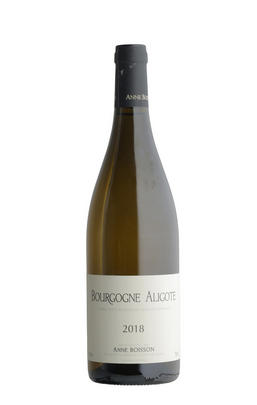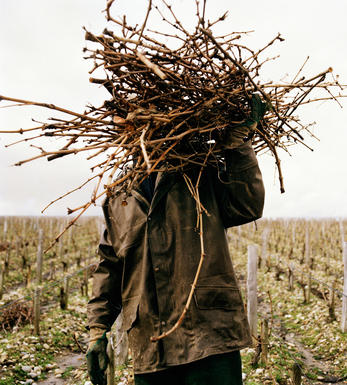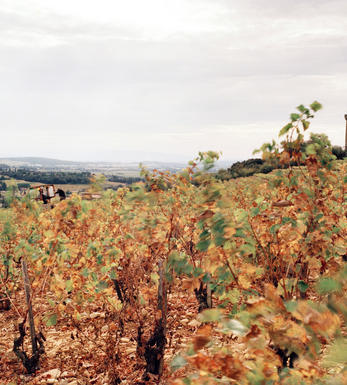
2018 Bourgogne Aligoté, Anne Boisson, Burgundy

Critics reviews
The 2018 Bourgogne Aligoté from Anne Boisson is showing nicely, mingling aromas of apples and pears with hints of white flowers. Medium-bodied, bright and fleshy, it’s lively and charming.
Once again, the bearded Bernard Boisson presided over my annual tasting in the usual, refreshingly old-school manner, offering splashes from various bottles, some open for several days and some for my benefit. As readers will remember, Bernard’s holdings have been entirely divided between his son Pierre and daughter Anne, who work together in the vineyards and cellar, since 2017.
As I’ve written before, in his day, Bernard Boisson was one of the village’s latest harvesters; and his wines only spent a year on the lees, with much of the production sold to the négociants. Pierre’s arrival at the Domaine some 15 years ago changed dramatically: the Domaine has returned, as Bernard puts it, to do things as they were done in his grandfather’s era.
That means early harvesting, little débourbage, long sur-lie élevage ranging from 19 to 22 months and restrained use of new oak—up to 30%, mainly from Saint-Romain’s Tonnellerie Gillet. The entire production is now bottled without filtration. This is a fine address, and this first look at the 2018s and some later-released 2017s revealed wines that are very much in the classic style that followers of these domaines have come to expect.
Drink 2020 - 2030
William Kelley, Wine Advocate (January 2021)
About this WINE

Domaine Boisson-Vadot
Domaine Boisson-Vadot, run by father and son team of Bernard and Pierre Boisson, is one of the rising stars in Mersault. The philosophy of the Domaine revolves around careful, hands-on vineyard management to coax the greatest potential of each vintage out of the various plots, and low-impact winemaking in the cellars that allows the unique terroir of each vineyard to surface. New oak is very minimal, no more than 30% for the top cuvées, and much more restraint in the village wines and in Bourgogne Blanc.
Pierre Boisson produces a village Meursault from his grandmother’s vineyards (50 year old vines in the lieu-dits of Criots and Perchots) that is hailed an model wine for the appellation. The Domaine also crafts other bottlings, from three of the best lieux à dits in Meursault: Sous la Velle , Grands Charrons (planted in 1988) and Chevalières (planted in 1982). The Grands Charrons is the most expressive, intensely flavoured of the three. The Sous la Velle is a more elegant version of the Grand Charrons. The Chevalières is the most mineral-driven, with a more restraint fruit flavours in its youth but great ageing potential- More like premier crus than village wines. Finally, Boisson-Vadot makes a powerful yet charming Meursault Genevrières premier cru.

Bourgogne Blanc
Bourgogne Blanc is the appellation used to refer to generic white wines from Burgundy, a wide term which allows 384 separate villages to produce a white wine with the label ‘Bourgogne.’ As a result of this variety, Bourgogne Blanc is very hard to characterise with a single notable style, however the wines are usually dominated by the presence of Chardonnay, which is just about the only common factor between them. That being said, Chardonnay itself varies based on the environmental factors, so every bottle of Bourgogne Blanc will vary in some way from the next! Pinot Blanc and Pinot Gris are also permitted for use in Bourgogne Blanc under the regulations of the appellation.
As Bourgogne Blanc is very much an entry-level white wine for most regions in Burgundy, prices are usually very reasonable, and due to the terroir and climate of Burgundy, Bourgogne Blanc wines tend to have a strong acidity to them, combined with a vibrant and often fruity palate when compared with other whites from the New World, say, allowing fantastic matchmaking with many different kinds of food.

Chardonnay
Chardonnay is often seen as the king of white wine grapes and one of the most widely planted in the world It is suited to a wide variety of soils, though it excels in soils with a high limestone content as found in Champagne, Chablis, and the Côte D`Or.
Burgundy is Chardonnay's spiritual home and the best White Burgundies are dry, rich, honeyed wines with marvellous poise, elegance and balance. They are unquestionably the finest dry white wines in the world. Chardonnay plays a crucial role in the Champagne blend, providing structure and finesse, and is the sole grape in Blanc de Blancs.
It is quantitatively important in California and Australia, is widely planted in Chile and South Africa, and is the second most widely planted grape in New Zealand. In warm climates Chardonnay has a tendency to develop very high sugar levels during the final stages of ripening and this can occur at the expense of acidity. Late picking is a common problem and can result in blowsy and flabby wines that lack structure and definition.
Recently in the New World, we have seen a move towards more elegant, better- balanced and less oak-driven Chardonnays, and this is to be welcomed.


Buying options
Add to wishlist
Description
The 2018 Bourgogne Aligoté from Anne Boisson is showing nicely, mingling aromas of apples and pears with hints of white flowers. Medium-bodied, bright and fleshy, it’s lively and charming.
Once again, the bearded Bernard Boisson presided over my annual tasting in the usual, refreshingly old-school manner, offering splashes from various bottles, some open for several days and some for my benefit. As readers will remember, Bernard’s holdings have been entirely divided between his son Pierre and daughter Anne, who work together in the vineyards and cellar, since 2017.
As I’ve written before, in his day, Bernard Boisson was one of the village’s latest harvesters; and his wines only spent a year on the lees, with much of the production sold to the négociants. Pierre’s arrival at the Domaine some 15 years ago changed dramatically: the Domaine has returned, as Bernard puts it, to do things as they were done in his grandfather’s era.
That means early harvesting, little débourbage, long sur-lie élevage ranging from 19 to 22 months and restrained use of new oak—up to 30%, mainly from Saint-Romain’s Tonnellerie Gillet. The entire production is now bottled without filtration. This is a fine address, and this first look at the 2018s and some later-released 2017s revealed wines that are very much in the classic style that followers of these domaines have come to expect.
Drink 2020 - 2030
William Kelley, Wine Advocate (January 2021)
wine at a glance
Delivery and quality guarantee